How to Find Profitable Online Course Ideas [In 3 Actionable Steps]
Looking for online course ideas so you can create your next profitable course?
If you’re like me, you might have tons of ideas for online courses you want to create, but the problem is, how do you know if your idea is good? Better yet, how do you know if an idea will be profitable?
Or maybe you’re struggling to come up with an idea. In this article, I will walk you through the steps you need to take to find your idea, research it, and, most importantly, validate it.
Now I can’t guarantee that your idea will succeed, but if you follow the simple steps I will share with you here, you’ll stand a much better chance at finding an online course idea that people seek.
Quick Note: Be sure to read the entire article to the end where we’ll talk about how you can get free live training to help you get started.
With that said, let’s get started…
Step #1 Find Your Idea
Your first step is to build a list of ideas to work from. Not every idea will turn into a profitable course, but having a list of ideas to work from can help you when one doesn’t work out.
Here are three simple ideas you can try to help you find some online course ideas.
Strategy #1 Find Popular Content
The first strategy is to find famous content people like and already consume. Chances are, if a bunch of people is sharing content and reading about it, they might likely be interested in taking a course on it.
You’ll need a tool like Buzzsumo to help you do this. This tool allows you to search for a topic and see the top content and how much people share it.
As an example, I searched email automation. Below is a picture of the results I got.

As you can see, many people want to learn about email automation. The searches range in the hundreds and thousands of people liking and sharing this content. This is a good sign if you want to create a course on this topic.
On top of that, this tool can also give you some idea of what is explicitly famous.
As you can see in the results above, they also show that segmentation is a popular topic. From here, you can input that keyword in Buzzsumo and see what other results you get.
Strategy #2 Look at Courses That Already Sell
The next step is to look for courses that already sell. To do this, check out Udemy.com. Udemy has one of the biggest course directories around.
Simply go to Udemy and type in the topic you want to teach.
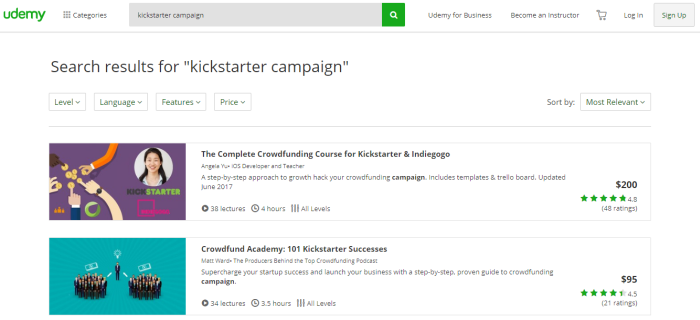
For example, you want to teach people how to run a successful Kickstarter Campaign. As you can see, there are several courses on the topic, which is a good sign.
Side Note: If you do a search for a topic and you can’t find any courses on it this may mean that people are not interested in learning about this topic and that you should probably stay away from it.
Strategy #3 What are Things People Need to Know
The last strategy is probably the simplest. A straightforward way to come up with course ideas is to think about things people need to know how to do in your topic.
For example, if you’re someone interested in teaching bloggers how to use email for their business, you might create a course on making a simple lead magnet or setting up an autoresponder series.
These ideas can be courses because almost everyone in online business needs to know how to do it.
Side Note: Don’t worry if your course idea sounds too small. For example, a course on setting up a basic 7 part autoresponder series sounds small but the more more specific you can get the more you’ll stand out from your competitors.
So there are three strategies you can use to build a list of course ideas.
Homework: Now it’s your turn; using the strategies above, come up with at least ten-course ideas that interest you.
Step #2 Research & Validate Your Idea
Now that you have your ten ideas, the next step is to research and validate your idea. However, doing this for all ten ideas can take some time, so I recommend picking the top 2 to 3 ideas and starting there.
To do this, we need to go back to Udemy. Even though you may not even be using this course platform, it’s a great place to look to help you do some basic research and validate your course idea.
Related Article: If you’re still trying to decide which course platform to go with check out my article on Teachable Vs Udemy here.
To do your research and validation, I’ve broken down into four steps to help you.
Step #1: Type in Your Topic
In this example, I picked Crowdfunding and typed it into the Udemy search bar.

As you can see, this is a popular topic. I even found a bestseller course as well. This is a good sign that people are buying a course on this topic. Your course doesn’t have to have a bestseller in your category, but seeing this is just a good sign.
When you click on the course, you’ll get some great info.
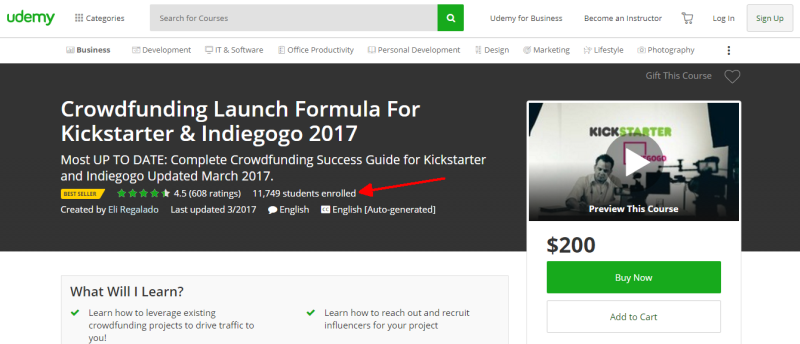
As you can see above, there are almost 12,000 people enrolled in this course! This means people want to learn this topic, and they will pay at least $200 to learn this topic.
I guess you could charge a lot more since Udemy controls how much you can charge for your course.
Finally, there are over 600 ratings and reviews for this course, which we’ll talk about in a minute.
Step #2 Course Description
The next step is to look at the course description.
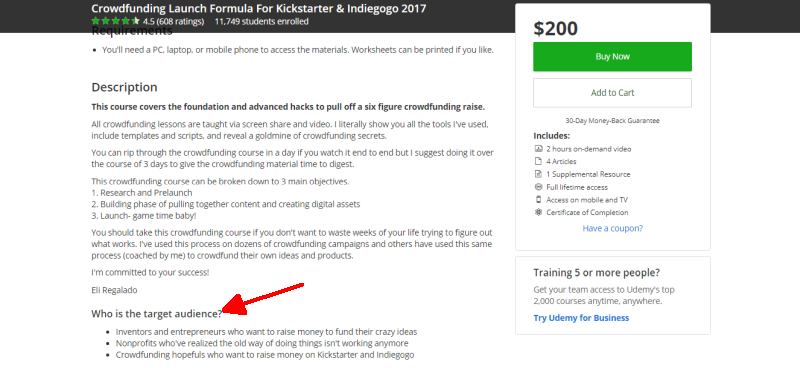
Looking at the description lets you see what’s all on the course, but most importantly, they’re sharing some very valuable info on the target market they are going for. This info is priceless since this course is already popular with people, so they got their targeting down solid.
Quick Tip: One thing I like to do is set up simple Excel spreadsheet to record all of this info to review it later.
Step # 3 Course Curriculum
The next step is to review the course curriculum to see what others are teaching and potentially not teaching.
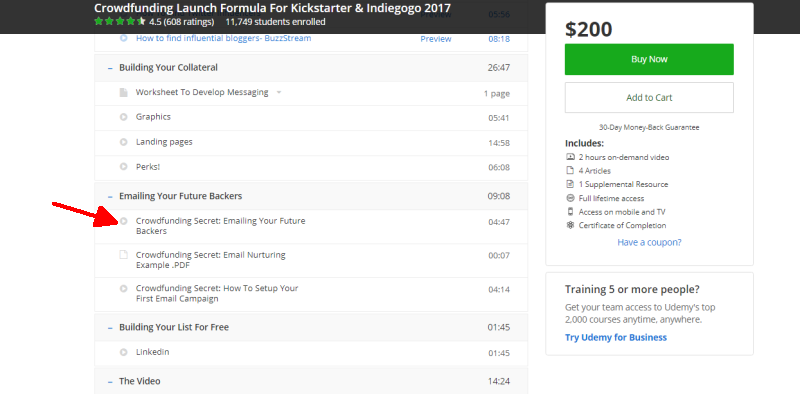
As you can see, they cover a wide variety of topics in this course, but in total, the course doesn’t look very long, and there looks to be a lot of gaps in the content and flow of the course, which could be something you could potentially capitalize on.
Also, I noticed they included a section on emailing your backers, which could be an essential section you might want to include in your course.
Step #4 Reviews
The final thing you’ll want to look at is the reviews of these courses. Doing this will let you see exactly what people say about the course, good or bad. These little nuggets of gold can tell you precisely what your target audience wants.
To find the best reviews, look at the three and 4-star reviews. One and 2-star reviews tend to be on the negative side, and 5-star reviews give a lot of praise but no accurate information.
Below are a few reviews I found that could be helpful.
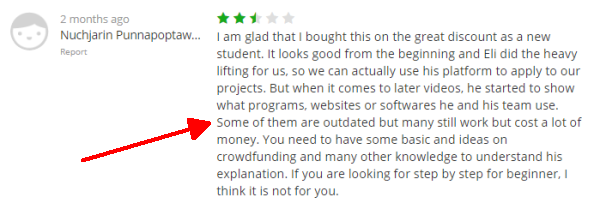
This first review points out that some technics are outdated, so you’ll have to update things in your course when new technology comes out. However, the person that took this course also mentioned that this it’s not very step-by-step, which means this is something the students of your course will want.

The second review I found was hugely valuable. This person claimed the course was very generic but, more than that, pointed out that it would have been great to see a mock project from start to finish.
You could easily add this to your course to give you that competitive edge.
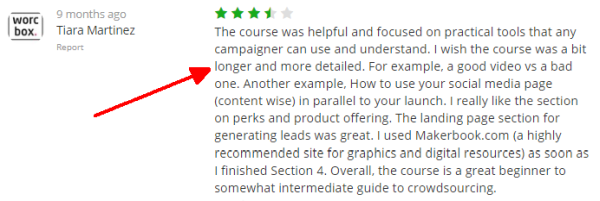
In this review, Tiara explained that she would’ve liked to see a more detailed and longer course that showed more examples. Doing this simple research can do a lot to help you figure out exactly what your audience wants out of a course like this.
Now that you’ve researched and found people buying a course similar to the one you want to create, it’s time to narrow things down and develop a course transformation.
Homework: Review 2 to 3 of your course ideas using the 4-step process I shared above.
Step #3 Determine Your Transformation & Target Audience
Now that you’ve researched 2 to 3 online course ideas, it’s time to narrow things down. At this point, it might be obvious which idea you should go with, but if not, here’s a trick to help you.
Go with the course idea that offers the most significant transformation. The transformation is what they will gain by taking your course.
For example, if you were taking a course on running your Kickstarter campaign, your transformation might be having your campaign up and running and bringing in contributions.
If you still can’t decide on a one-course idea, I recommend going with your gut and picking one. If you have three ideas and can’t decide, you have 1 or 2 more potential course ideas you could develop after your first one.
Finally, the last thing you must do is determine the target audience you want to sell your course to. The best way to do this is by looking at who your competition is targeting.
In the course above, they targeted investors, entrepreneurs, and nonprofits. The problem is that they are trying to target too many people. I suggest targeting only one group of people when you’re first starting out.
For example, you could focus on Startups who’ve never done crowdfunding. This narrows things down a bit more, and instead of trying to focus on everyone.
Homework: Determine your course’s transformation and who your target audience will be.
Do You Have Your Course Idea – Here’s What To Do Next
Now that you’ve gone through the steps, find a solid online course idea you might be ready to take the next step. If so, you will want to sign up for Free Live Training by Teachable.
The free training will teach you the 7 Steps To Launch Your Profitable Online Course. Here’s what you’ll learn in this free training…
- How to set up your first course
- Get an inside look at Teachable (My Preferred Online Course Platform)
- Plus, a Live Q&A to help you answer all of your questions
So if you are ready to create your first online course, click here to sign up for your free Live Training.
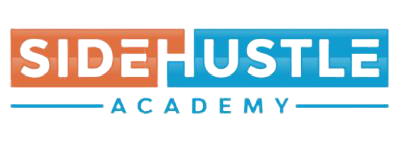


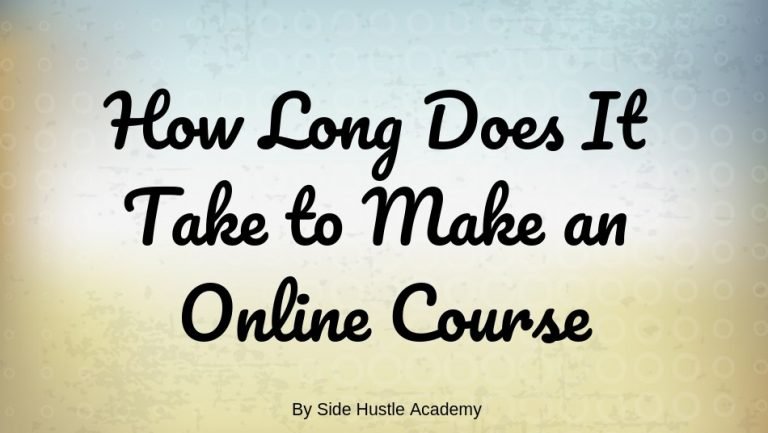
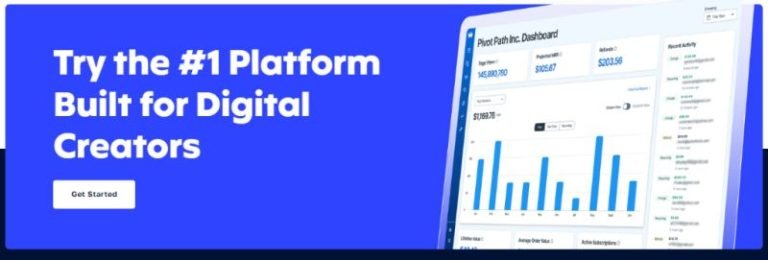
![Udemy vs Teachable – Which Platform is the Best [Updated for 2018]](https://sidehustleacademy.com/wp-content/uploads/2016/03/Udemy-vs-Teachable.jpg)

